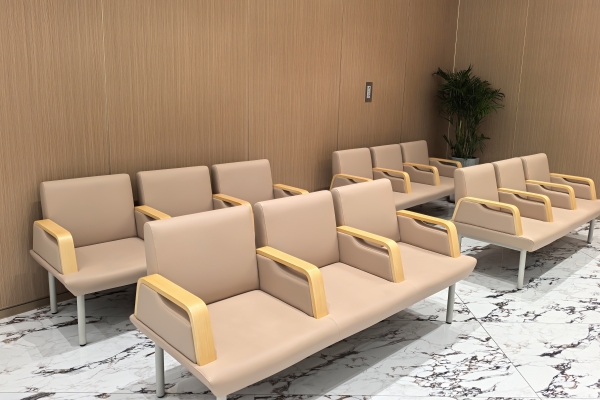In public spaces, waiting sofas are more than just seating; they often carry multiple functions, including comfort, spatial image, and crowd-carrying capacity. Whether in hospitals, airports, or office buildings, waiting areas are the first place visitors stop, making choosing the right waiting area sofa crucial. However, the requirements vary significantly across different venues. Today, we'll analyze the different requirements for waiting area sofas in hospitals, airports, and offices.
1. Hospital Waiting Sofas: Comfort and Durability Are Essential.
Hospital waiting areas typically experience high traffic, long wait times, and increased anxiety for patients and their families. Therefore, hospital waiting area sofas must balance comfort and durability.
Comfort: A moderate level of firmness is essential, avoiding discomfort caused by being too firm, yet support-limiting by being too soft.
Material: Easy-to-clean, antibacterial, and stain-resistant fabrics are particularly important, with leather or medical-grade eco-friendly leather being common.
Durability: Structural stability is essential to withstand frequent use and repeated abuse.

2. Airport Waiting Sofas: Wear resistance and high load-bearing capacity are key.
Airport waiting room sofas are used around the clock in a high-traffic environment, with passengers coming and going, and stays ranging from tens of minutes to several hours.
Durable Waiting Room Sofas: The material must be wear-resistant and pressure-resistant, with metal frames or high-strength wood structures being common.
Cleanliness: Airports have complex passenger flows and require frequent cleaning, so the sofa surface should be stain-resistant and easy to wipe.
Spatial Layout: Airport waiting halls are large, so waiting room sofas often feature modular designs for flexible assembly.
3. Office Waiting Sofas: Image and aesthetics are prioritized.
Unlike hospitals and airports, office waiting room sofas serve more as a showcase for the company's image. They often form the first impression of clients, partners, and interviewees upon entering the lobby or reception area.
Design: Appearance is prioritized, with minimalist, modern, or high-end styles being preferred.
Comfort: While extended stays are not required, a comfortable seating experience is essential.
Customized waiting sofas: Many companies tend to customize sofas to suit their corporate culture and space style.